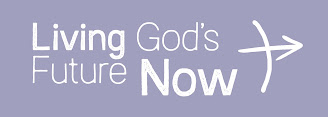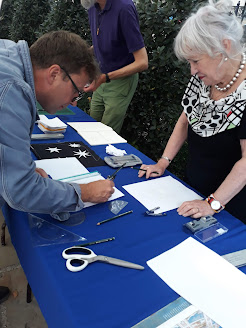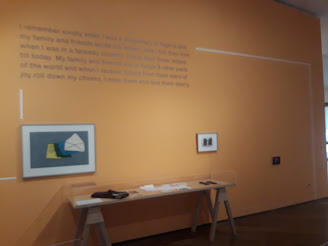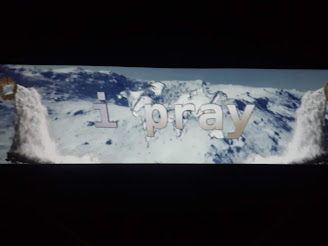We’ve developed this in response to the pandemic and our changing world. The church is changing too, and - as we improvise and experiment - we can learn and support each other.
This is 'Living God’s Future Now’ - talks, workshops and discussion - hosted by HeartEdge. Created to equip, encourage and energise churches - from leaders to volunteers and enquirers - at the heart and on the edge.
The focal event in ‘Living God’s Future Now’ is a monthly conversation where Sam Wells explores what it means to improvise on God’s kingdom with a leading theologian or practitioner.
The online programme includes:
- Regular weekly workshops: Biblical Studies (Mondays), Sermon Preparation (Tuesdays) and Community of Practitioners (Wednesdays)
- One-off workshops on topics relevant to lockdown such as ‘Growing online communities’ and ‘Grief, Loss & Remembering’
- Monthly HeartEdge dialogue featuring Sam Wells in conversation with a noted theologian or practitioner
Weekly (September – December 2020)
- Mondays: Biblical Studies class, 19:30-21:00 (BST), Zoom meeting. Register in advance: https://us02web.zoom.us/meeting/register/tZ0rc-msqD8sEtE7n_X9u17Jl6R5CvzjjI5e.
- Tuesdays: Sermon Preparation Workshop, 16:30 (BST), livestreamed at https://www.facebook.com/theHeartEdge/.
- Wednesdays: Community of Practitioners workshop, 16:30 (BST), Zoom meeting. Email jonathan.evens@smitf.org to register.
September
Homelessness: Changing situation, changed responses - Tuesday 1 September, 14:00-15:30 (BST), zoom. This workshop seeks to provide information about the changed situation regarded homelessness and suggest ways that churches can most effectively support and engage. With Pam Orchard (The Connection), Fr Dominic Robinson (Farm Street Church), Ruth Bottoms (West London Mission), Shermara Fletcher (Centre for Theology & Community), and Jon Jon Hilton (London Jesus Centre). Register for a zoom invitation at https://www.eventbrite.co.uk/e/homelessness-changing-situation-changed-responses-tickets-117627712655.
Fundraising as Community building: Thursday 3 September, 15:00-16:30 (BST). Zoom link - https://www.eventbrite.co.uk/e/fundraising-as-community-development-tickets-114413377492. How talking about mission and income can strengthen your church community with Jo Beacroft-Mitchell (Generous Giving and Stewardship Team Leader for the Diocese of York), Stewart Graham (Director of Fundraising, The Archbishop of York Youth Trust) & Sarah Rogers (Watermark Associates). Part 2 of this conversation – Imagining the Future - is on Wednesday 9 September, 14:00 BST - https://www.eventbrite.co.uk/e/fundraising-as-community-building-part-2-imagining-the-future-tickets-118301973387.
Telling Encounters - A path through the woods: Friday 4 September, 16:30-18:30 (BST), zoom meeting - https://www.eventbrite.co.uk/e/telling-encounters-a-path-through-the-woods-tickets-117656695343. Advance workshop for the Telling Encounters: conference. This workshop will create musical or sound-based responses to telling encounters during the Covid-19 pandemic. These will become part of a rondo-style piece, modelled on Mussorgsky’s Pictures from an Exhibition, with a recurring refrain of travelling through the woods, Workshop leaders Neil Valentine, June Boyce-Tillman and Vicky Feldwick will show participants how to create provocations in sound/music.
Theology Group: Sunday 6 September, 18:00 (BST), zoom meeting - https://www.eventbrite.co.uk/e/theology-group-tickets-117672420377. An opportunity to reflect theologically on issues of today and questions of forever with Sam Wells, who will be responding to questions from a member of the congregation of St Martin-in-the-Fields. That person will also chair the session and encourage your comments and questions.
'Reimagining music in church post Covid-19': Tuesday 8 September, 18:30-19:30 (BST), zoom meeting - https://www.eventbrite.co.uk/e/reimagining-music-in-church-post-covid-19-tickets-117674233801. 1. Congregational focus.
Fundraising as Community building - Imagining the Future: Wednesday 9 September, 14:00-15:30 BST, zoom meeting - https://www.eventbrite.co.uk/e/fundraising-as-community-building-part-2-imagining-the-future-tickets-118301973387. This workshop considers the new opportunities available to you for fundraising and community building. Join us as we look at how to talk about success and impact for the coming months and consider how we might extend our table to meet new partners and/or develop new projects. We'll consider the theological questions of how we set out our visions and plans in ways that encourage funders and find those who might be interested in working with us to strengthen the communities we work in. This will build on the conversations from the event on 4th September and, hopefully, provide you with some questions and thoughts as you continue to re-shape your community after lockdown.
‘Living God’s Future Now’ - HeartEdge monthly dialogue: Thursday 10 September, 18:00 (BST), Zoom meeting - https://www.eventbrite.co.uk/e/living-gods-future-now-conversation-stanley-hauerwas-tickets-116902712159. Sam Wells in dialogue with Stanley Hauerwas on improvising the kingdom.
Shut In, Shut Out, Shut Up: Friday 11 September, 16:30-18:00 (BST), zoom meeting - https://www.eventbrite.co.uk/e/shut-in-shut-out-shut-up-tickets-117678695145. Fiona MacMillan and guests explore the topic of disabled people, church and coronavirus. Fiona MacMillan is Chair of the Disability Advisory Group at St Martin-in-the-Fields and a Trustee of Inclusive Church.
In What Do We Trust? Autumn Lecture Series: Monday 14 September. Lecturer: Tom Holland. Tom Holland is an award-winning historian, biographer and broadcaster. His latest book Dominion is a rich and compelling history of Christendom which won The Sunday Times History Book of the Year in 2019. Register at https://www.eventbrite.co.uk/e/in-what-do-we-trust-learning-from-history-autumn-lecture-series-2020-tickets-116985565977.
'Reimagining music in church post Covid-19': Tuesday 15 September, 18:30-19:30 (BST), zoom meeting - https://www.eventbrite.co.uk/e/reimagining-music-in-church-post-covid-19-tickets-117674233801. 2. Composer focus.
Telling Encounters – Windows on the world: Thursday 17 September, 14:00-15:30 (BST), zoom meeting - https://www.eventbrite.co.uk/e/telling-encounters-windows-on-the-world-tickets-117681714175. Advance workshop for the Telling Encounters: conference. This workshop will use photo, drawing, painting, poem or prose to describe what we see and the window we look through. It could be an actual window in our homes or our particular frame / perspective / experience e.g. as wheelchair user, voice hearer etc. Contributions will form part of an online exhibition at Telling Encounters: Stories of Disability, Faith, Church & God on Saturday 17 October.
Shut In, Shut Out, Shut Up: Friday 18 September, 16:30-18:00 (BST), zoom meeting - https://www.eventbrite.co.uk/e/shut-in-shut-out-shut-up-part-2-tickets-117684283861. Fiona MacMillan and guests explore the topic of neurodiversity, faith and church. Fiona MacMillan is Chair of the Disability Advisory Group at St Martin-in-the-Fields and a Trustee of Inclusive Church.
Theology Reading Group: Sunday 20 September, 18:00 (BST), zoom meeting - https://www.eventbrite.co.uk/e/theology-reading-group-silence-by-by-shusaku-endo-tickets-117686789355. ‘Silence’ by Shusaku Endo - discuss and share this critically claimed book with Sam Wells, the congregation of St Martin-the-Fields and other friends.
'Reimagining music in church post Covid-19': Tuesday 22 September, 18:30-19:30 (BST), zoom meeting - https://www.eventbrite.co.uk/e/reimagining-music-in-church-post-covid-19-tickets-117674233801. 3. Voluntary Choir focus.
‘Living God’s Future Now’ - HeartEdge monthly dialogue Part 2: Thursday 24 September, 18:00 (BST), Zoom meeting - https://www.eventbrite.co.uk/e/living-gods-future-now-conversation-stanley-hauerwas-guests-tickets-117690049105. Sam Wells in dialogue on improvising the kingdom with Stanley Hauerwas, Justin Coleman (UMC), and Debra Dean Murphy (West Virginia Wesleyan).
Shut In, Shut Out, Shut Up: Friday 25 September, 16:30-18:00 (BST), zoom meeting - https://www.eventbrite.co.uk/e/shut-in-shut-out-shut-up-part-3-tickets-117695934709. Fiona MacMillan and guests explore the topic of disability and church. Fiona MacMillan is Chair of the Disability Advisory Group at St Martin-in-the-Fields and a Trustee of Inclusive Church.
'Reimagining music in church post Covid-19': Tuesday 29 September, 18:30-19:30 (BST), zoom meeting - . https://www.eventbrite.co.uk/e/reimagining-music-in-church-post-covid-19-tickets-117674233801. 4. Educational Choir focus.
October
Why be enterprising? Entrepreneurial impacts for churches: Thursday 1 October, 19:00 BST, zoom meeting - https://www.eventbrite.co.uk/e/why-be-enterprising-entrepreneurial-impacts-for-churches-tickets-118522350541. How can church and commerce be realigned to generate finance while creatively extending mission? This workshop is about sharing experiences of enterprise through stories and tips from practitioners. With Jaime Edwards-Acton (Saint Stephen's Episcopal Church Hollywood), Richard Frazer (Greyfriars Kirk), Catherine Jones (Grassmarket Community Project), David Neita (Entrepreneur) and Stephen Norrish (Milton Keynes Christian Foundation).
---------------------------------------------------------------------------------------------------------
Why be enterprising? Entrepreneurial impacts for churches: Thursday 1 October, 19:00 BST, zoom meeting - https://www.eventbrite.co.uk/e/why-be-enterprising-entrepreneurial-impacts-for-churches-tickets-118522350541. How can church and commerce be realigned to generate finance while creatively extending mission? This workshop is about sharing experiences of enterprise through stories and tips from practitioners. With Jaime Edwards-Acton (Saint Stephen's Episcopal Church Hollywood), Richard Frazer (Greyfriars Kirk), Catherine Jones (Grassmarket Community Project), David Neita (Entrepreneur) and Stephen Norrish (Milton Keynes Christian Foundation).
---------------------------------------------------------------------------------------------------------
Lavine Hudson - A Little Sensitivity.


















































